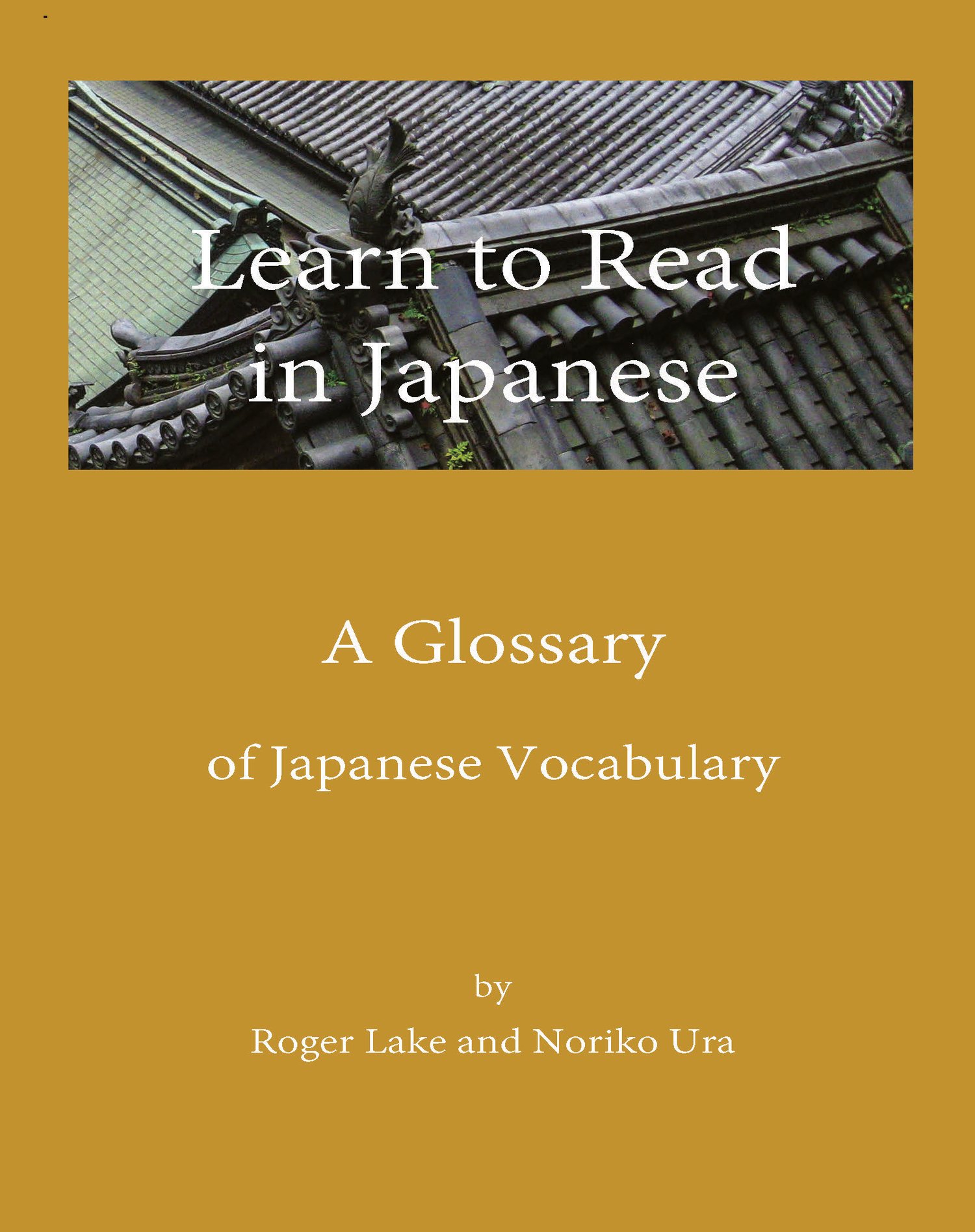
Glossary for "Learn to Read in Japanese, Volumes 1-4"
On Sale
$7.95
$7.95
This is an expanded edition of our previous Glossary. The most recent changes were made in July 2025.
Since each kanji character in the Japanese language is associated with its own unique vocabulary, the study of kanji unavoidably requires that students learn many new Japanese words. To help you organize and keep track of the new words that are introduced in our four Learn to Read in Japanese books, we have assembled this companion glossary.
If you would like to see a short sample of this product, please click on the Preview button above. Depending on your equipment, you can download the sample as a small PDF file, or you might have the option of viewing it without downloading it.
This glossary lists more than 9,700 Japanese terms that are used in the four books, and it provides definitions and memory aids for nearly every term. The memory aids are of two types: explanations which describe how the listed terms are derived from other known Japanese words, or when such explanations aren’t possible, mnemonics to help you to remember the terms’ definitions and pronunciations. The glossary also identifies more than 10,000 synonyms (or at least “related terms”) which make it possible for you to compare similar words side by side.
Of course, this glossary cannot replace a good Japanese dictionary, but it includes thousands of explanations, mnemonics and synonyms that you won’t find in a standard dictionary, and it focuses precisely on the terms that you will encounter in the four Learn to Read in Japanese books. We think that it will help to make your Japanese study easier and more interesting.
Please note that this version of the glossary includes a "q" placed just prior to every search entry. The purpose of the "q" is to enable accurate searches for "search terms," defined as the first word or words of every search entry.
For example, if you were searching for the word "kyou" (today) in this PDF version, you would be able to find it quickly by using the search term "qkyou." (If you have set the Search function in Adobe Acrobat to be case sensitive, you should type “qKyou.”) If you were to search for "kyou" or "Kyou" without using the "q," your search would produce many extraneous results.
One reason for these extraneous results is that the sequence "kyou" is a component of many Japanese words. Another reason is that the glossary contains thousands of synonyms, which means that many terms appear in several places in the document, in addition to their primary search entries. If you prefer not to see these "q" marks which we have added to enable precise searches, please consider purchasing the print version of the glossary, which is available at Amazon and Ingram Spark.
For suggestions about how to use this document to practice Japanese reading, please see Efficient Japanese Reading Practice on a Computer.
Since each kanji character in the Japanese language is associated with its own unique vocabulary, the study of kanji unavoidably requires that students learn many new Japanese words. To help you organize and keep track of the new words that are introduced in our four Learn to Read in Japanese books, we have assembled this companion glossary.
If you would like to see a short sample of this product, please click on the Preview button above. Depending on your equipment, you can download the sample as a small PDF file, or you might have the option of viewing it without downloading it.
This glossary lists more than 9,700 Japanese terms that are used in the four books, and it provides definitions and memory aids for nearly every term. The memory aids are of two types: explanations which describe how the listed terms are derived from other known Japanese words, or when such explanations aren’t possible, mnemonics to help you to remember the terms’ definitions and pronunciations. The glossary also identifies more than 10,000 synonyms (or at least “related terms”) which make it possible for you to compare similar words side by side.
Of course, this glossary cannot replace a good Japanese dictionary, but it includes thousands of explanations, mnemonics and synonyms that you won’t find in a standard dictionary, and it focuses precisely on the terms that you will encounter in the four Learn to Read in Japanese books. We think that it will help to make your Japanese study easier and more interesting.
Please note that this version of the glossary includes a "q" placed just prior to every search entry. The purpose of the "q" is to enable accurate searches for "search terms," defined as the first word or words of every search entry.
For example, if you were searching for the word "kyou" (today) in this PDF version, you would be able to find it quickly by using the search term "qkyou." (If you have set the Search function in Adobe Acrobat to be case sensitive, you should type “qKyou.”) If you were to search for "kyou" or "Kyou" without using the "q," your search would produce many extraneous results.
One reason for these extraneous results is that the sequence "kyou" is a component of many Japanese words. Another reason is that the glossary contains thousands of synonyms, which means that many terms appear in several places in the document, in addition to their primary search entries. If you prefer not to see these "q" marks which we have added to enable precise searches, please consider purchasing the print version of the glossary, which is available at Amazon and Ingram Spark.
For suggestions about how to use this document to practice Japanese reading, please see Efficient Japanese Reading Practice on a Computer.
